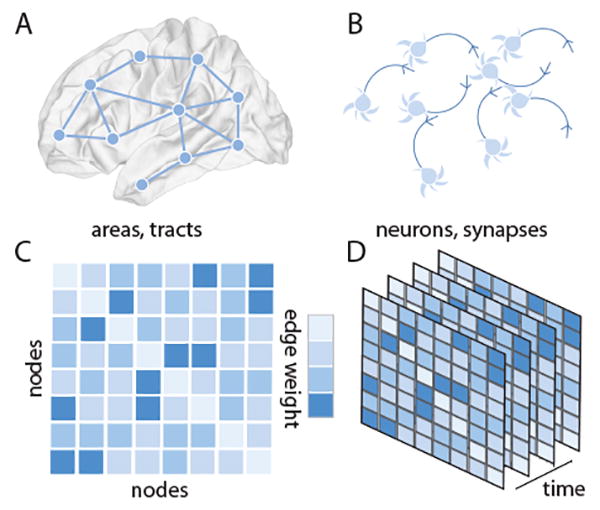Figure 1.

Network Models of Neural Systems. Network models represent complex systems by their fundamental units or elements, and by the pattern of connections, interactions, or relationships between those elements. In neural systems, networks can be defined across many spatial scales. (A) At the large scale, brain areas can be represented as network nodes, and white matter tracts or functional interactions between areas can be represented as network edges. (B) At the small scale, neurons, glia, or other cells can be represented as network nodes, and gap junctions or chemical synapses can be represented as network edges. (C) We represent the network as a graph, and encode the connectivity information in an adjacency matrix that stores the weight of each edge connecting each pair of nodes. The representation here is a weighted graph representation where the notion of neighbors becomes graded: the nearest neighbor of a node is the node to which it most strongly connects. Importantly, the order of nodes presented in a visualization is independent of the topology of the network. (D) To study learning, we string together connectivity patterns (or adjacency matrices) as they evolve through time.
